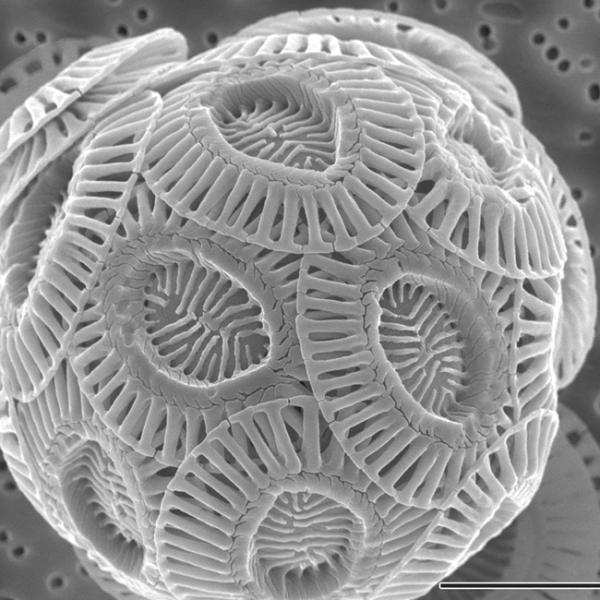Algae blooms in Florida have been in the paper for quite a while, my colleague Dr. Bloom has written on their toxic chemicals. The losses, to sea life and humans along the coast, have been increasing. And while the current problems are associated with cyanobacteria, my eye did run across an interesting article on another pesky sea bloom, phytoplankton, specifically Emiliania huxleyi. It turns out that this phytoplankton may affect the weather. Here’s how.
Life and death at sea
These microscopic, plant-like creatures are low on the food chain, supporting many organisms and are a dominant bloom-forming species, capable of covering thousands of square miles. 
LandSat photograph of E. huxleyi bloom in the English Channel
The cells are covered with a thin shell of calcium carbonate, CaCO3. Scientists who have studied Emiliania have noted that the bloom’s growth is characterized by the typical sigmoid shaped curve, initially slow growth, a rapid increase, followed by a demise, due not to a lack of food resources, but because of infection with their own virus, E. huxleyi virus. (Who knew?)
When infected, the Emiliania lose their protective shell, called coccoliths. And those bits of calcium carbonate get airborne. Not by growing wings, but by becoming part of sea spray, which is, in turn, a significant contributor to the aerosol above the seas and a player in Earth’s climate. In describing these aerosols one of the authors states:
“They cover 70% of the atmosphere and can serve as cloud condensation nuclei, be surfaces for chemical reactions, and significantly contribute to the Earth’s radiation….because they are very reflective.”
It turns out that the infection, results not only in the death of the blooming phytoplankton, but the release of more coccoliths into sea spray makes it more alkaline and more reflective. The alkalinity alters the reactions of atmospheric sulfur dioxide (the source of acid rain). Also, because of the shape of the coccoliths, they act like tiny “parachutes” gently wafting around, in no rush to return to the sea. So whatever effect they impart to our weather and earthly radiation, continues for some time.
Although the effects are widely recognized in field studies, the current more detailed work was performed in the laboratory. The researchers are now planning on taking their studies to phytoplankton blooms in the real world to see how their research replicates and differs. But there is one thing for sure, the factors affecting our climate are manifold, and there is much to learn about their interactions.
Source: "Infection dynamics of a bloom-forming alga and its virus determine airborne coccolith emission from seawater" iScience Cell press DOI:10.1016/j.isci.2018.07.017




